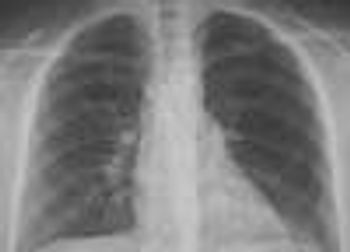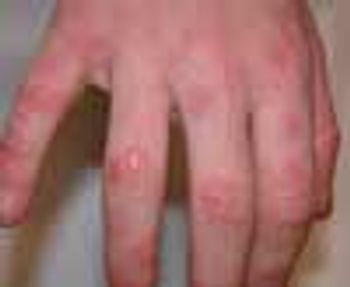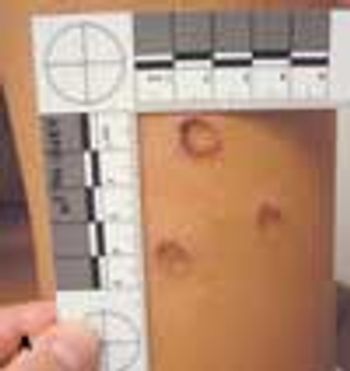
TORONTO -- Increased cholesterol and triglycerides in HIV-infected children being treated with highly active antiretroviral therapy (HAART) can be markedly reduced by switching regimens, researchers reported here.

TORONTO -- Increased cholesterol and triglycerides in HIV-infected children being treated with highly active antiretroviral therapy (HAART) can be markedly reduced by switching regimens, researchers reported here.

TORONTO -- Even in HIV-infected patients who have tried and failed several drug regimens, the goal should still be to reduce the virus to undetectable levels, according to guidelines presented here.

TORONTO -- This Special Report from Zach Wise, a contributing videographer for MedPage Today, provides a multimedia portrayal of the activities at the 16th Annual International AIDS Conference here.

TORONTO -- Once patients have controlled HIV with a standard drug cocktail, treatment with a "boosted" protease inhibitor may be all they need to keep the virus at bay.

TORONTO -- HIV patients ages 50 and over do a better job controlling the virus but may need more help managing adverse effects and comorbidities.

CHAPEL HILL, N.C. -- Of U.S. adolescents in the general population, 3.5% have exchanged sex for money or drugs, and two-thirds of these youths were boys, researchers reported.

LOS ANGELES -- Unmarried life may impinge on life expectancy, according to researchers here.

GENEVA -- The notion of HIV-treatment interruption -- consigned not long ago to the ash heap of failed ideas -- should be revisited, said investigators here.

LONDON -- Improvements in highly active anti-retroviral therapy (HAART) has resulted in lower viral loads and higher immune cell counts but not a decline in mortality or progression to AIDS.

Abstract: A significant advance in CT imaging is the use of 3-dimensional (3D) reconstruction techniques. A 3D reconstruction, for example, permits a volumetric evaluation of the contours of the airways and displays areas of stricture, or narrowing, more effectively than do routine axial images. External 3D rendering, also called CT bronchography, helps reveal complex airway abnormalities and improves the detection of subtle airway stenoses. Although it is primarily an investigational tool, internal 3D rendering (virtual bronchoscopy) has several potential applications, including assessing airway stenoses, guiding transbronchial biopsy procedures, and screening for lung cancer. Multiplanar reformation imaging methods can aid in the assessment of airway stenoses, airway stents, tracheomalacia, and extrinsic airway compression. A review of multiplanar images can also aid in the planning of stent placement or surgery. (J Respir Dis. 2006;27(8):348-352)

Abstract: A number of factors can contribute to a delay in the diagnosis of tuberculosis in pregnant women, including the presence of nonspecific symptoms, such as fatigue and cough; extrapulmonary manifestations; and asymptomatic disease. The diagnostic evaluation is the same as for nonpregnant patients and includes tuberculin skin testing and, when indicated, chest radiography (with appropriate shielding) and acid-fast bacillus stain and culture. Antituberculous therapy during pregnancy is generally safe and effective, although streptomycin should not be used because of the risk of vestibular or auditory damage to the fetus. For patients with active tuberculosis, treatment should be initiated as soon as the diagnosis is established. The treatment of latent infection is somewhat more controversial. The timing of the initiation of therapy is based on the risk of progression to active disease. (J Respir Dis. 2006;27(8):338-347)

Child With Dysphagia, Fever, and Weight Loss

Kaposi sarcoma (KS) is a hyperplasia or neoplasia caused by human herpesvirus 8 (HHV-8).

A succinct review of hyperkalemia . . . its various causes, clinical manifestations and consequences, ECG findings, and treatment approaches.

A 6-year-old girl with a nonproductive cough for 4 days and chest pain for 2 days was brought to the emergency department. According to the mother, the child had no fever or wheezing. She had no history of surgery, was not taking any medications, and had no contact with ill persons.

Several asymptomatic, erythematous papules and plaques had appeared on the hands of an otherwise healthy 11-year-old girl. The personal and family medical histories were noncontributory. A punch biopsy from the largest lesion on the palm confirmed the clinical diagnosis of localized granuloma annulare, a self-limited inflammation of the dermis.

The patient had 3 circular healing wounds of varying diameters on the lateral and inner aspects of his upper left arm. The patient volunteered that he had inflicted these wounds with a cigarette in an attempt to tattoo himself to symbolize his "crazy life." (He was right-handed.) "Smiley faces" had also been tattooed on his hand with a lighter. There were no tattoos, body piercings, or body mutilation other than those mentioned.

SACRAMENTO, Calif. -- Even when HIV has all but disappeared from the peripheral blood after the start of therapy, the virus may still be lurking in the gut, slowing the restoration of immune response, according to researchers here.

ROCKVILLE, Md. -- High-strength hydrogen peroxide, which is heavily marketed on the Internet for a diseases ranging from AIDS to emphysema, can cause serious harm or death when ingested, according to a warning issued by the FDA.

BOSTON -- The modern era of anti-HIV treatment has dramatically reduced the rate of opportunistic infections among HIV-positive children and adolescents.

VALENCIA, Spain -- With a combination of pegylated interferon and Rebetol (ribavirin), liver transplant recipients with recurrent hepatitis C (HCV) infection respond as well as non-transplants patients, researchers here reported.

A 49-year-old man presented to theemergency department (ED) andcomplained of fever and cough thatproduced bloody sputum for 1 day.He had AIDS and recently receiveda diagnosis of large B-cell lymphoma.His most recent CD4+ cellcount was 24/µL. He had optedagainst receiving highly active antiretroviraltherapy and prophylaxisfor opportunistic infection.

Abstract: Elderly persons with active tuberculosis may present with the classic features, such as cough, hemoptysis, and fever, but some patients present with less typical signs, such as hepatosplenomegaly, liver function abnormalities, and anemia. A high index of suspicion is required when a patient presents with cough or pneumonia unresponsive to conventional therapy. Acid-fast smear and mycobacterial culture of a sputum specimen are recommended for diagnosis. For an elderly patient who tests positive with purified protein derivative, 9 months of isoniazid prophylaxis is recommended. For patients who are intolerant of isoniazid or have been exposed to or infected by an isoniazid-resistant strain, rifampin single-agent preventive therapy may be an effective alternative. (J Respir Dis. 2006;27(7):307-315)

A 37-year-old man presents with new-onset fever and abdominal pain of several days' duration. What does the PA film show, and what further action would you take to arrive at a diagnosis?

Rates of gonorrhea and chlamydial infection are highest among females 15 to 24 years old. Annual screening of all sexually active adolescents is warranted.